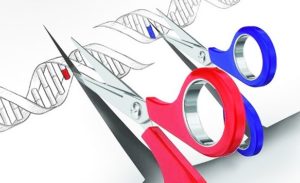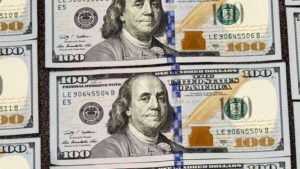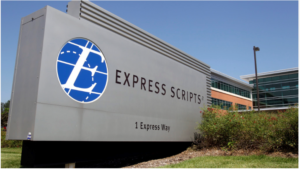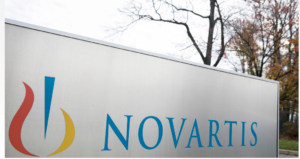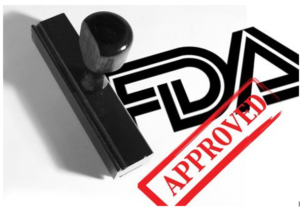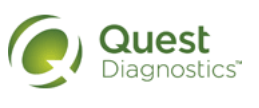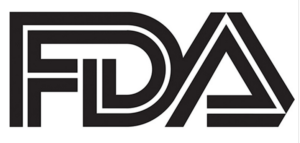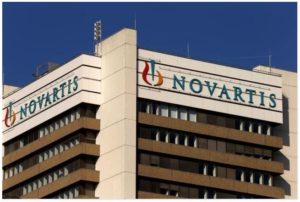- A serious new hurdle for CRISPR: Edited cells might cause cancer, two studies find (statnews.com)CRISPR stocks tank after research shows edited cells might cause cancer (cnbc.com)
Editing cells’ genomes with CRISPR-Cas9 might increase the risk that the altered cells, intended to treat disease, will trigger cancer, two studies published on Monday warn — a potential game-changer for the companies developing CRISPR-based therapies...scientists found that cells whose genomes are successfully edited by CRISPR-Cas9 have the potential to seed tumors inside a patient. That could make some CRISPR’d cells ticking time bombs...The CEO of CRISPR Therapeutics, Sam Kulkarni, told STAT the results are “plausible.” Although they likely apply to only one of the ways that CRISPR edits genomes (replacing disease-causing DNA with healthy versions) and not the other (just excising DNA), he said, “it’s something we need to pay attention to...We need to do the work and make sure edited cells returned to patients don’t become cancerous.”...Standard CRISPR-Cas9 works by cutting both strands of the DNA double helix. That injury causes a cell to activate a biochemical first-aid kit orchestrated by a gene called p53, which either mends the DNA break or makes the cell self-destruct...The flip side of p53 repairing CRISPR edits, or killing cells that accept the edits, is that cells that survive with the edits do so precisely because they have a dysfunctional p53 and therefore lack this fix-it-or-kill-it mechanism...The reason why that could be a problem is that p53 dysfunction can cause cancer...P53 mutations are responsible for nearly half of ovarian cancers; 43 percent of colorectal cancers; 38 percent of lung cancers; nearly one-third of pancreatic, stomach, and liver cancers; and one-quarter of breast cancers...
- Novartis blazes Big Pharma trail, striking deal with Canadian company to distribute medical marijuana products (fiercepharma.com)
In what may be the first foray by Big Pharma into the sale of medical marijuana products, Novartis has struck a deal with a Canadian company that sells medical cannabis products not only in its home country but also in Europe...Tilray announced today that it has a binding agreement with Sandoz Canada to be its exclusive supplier of “non-smokable/non-combustible medical cannabis products.”...While Canadian law only allows companies to mail their products directly to patients, the company said that “subject to future regulatory changes,” Sandoz Canada will wholesale and distribute the products to Canadian hospitals and pharmacies. It also calls for the Swiss company to use its expertise to educate pharmacists about the products and to help Tilray develop new products and dose forms...No financial details were provided, but a Tilray spokesperson told the Financial Post that Sandoz has not taken a financial stake in the company...
- 7 Medical Conditions That Will Be Lining Big Pharma’s Pockets by 2020 (fool.com)
Big pharma stands to make hundreds of billions of dollars from a handful of medical conditions.
- No. 7: Viral hepatitis - $45 billion and $55 billion will be spent globally on drugs that treat viral hepatitis by 2022...around 257 million have chronic hepatitis B virus infection and 71 million people have chronic hepatitis C virus infection.
- No. 6: Respiratory diseases - treating respiratory diseases are expected to generate between $53 billion and $56 billion in sales by 2020. The most common respiratory diseases include asthma, allergies, and chronic obstructive pulmonary disease.
- No. 5: Autoimmune diseases - Autoimmune disease medications could make big pharma companies between $55 billion and $65 billion by 2020
- No. 4: Cardiovascular diseases - cardiovascular disease drugs will rack up sales between $73 billion and $76 billion by 2020...Cardiovascular drugs include treatments for hypertension, heart disease, and cholesterol.
- No. 3: Pain - Pain medications are projected to be the third-biggest moneymaker by 2020, with sales of $82 billion to $85 billion...drugs includes treatments for musculoskeletal pain, arthritis, anesthesia, analgesics (both narcotic and non-narcotic), and migraine.
- No. 2: Diabetes - diabetes drugs are expected to be near the top in spending, with projected global sales between $107 billion and $113 billion by 2020
- No. 1: Cancer - The top medical condition that will likely line big pharma's pockets by 2020 is cancer…sales of cancer drugs will be between $100 billion and $120 billion
- Express Scripts shuts out 64 branded drugs from 2018 formulary (biopharmadive.com)
Express Scripts, a top-three pharmacy benefit manager in the U.S., will exclude an additional 64 drugs from its national listing of preferred drugs next year, sending shares in several biotechs affected spinning...Notably, the PBM's 2018 formulary leaves off Amgen's neutropenia blockbuster Neupogen (filgrastim) in favor of Novartis' biosimilar medicine Zarxio (filgrastim-sndz) and drops Lilly's osteoporosis drug Forteo (teriparatide)...Forty-six other brand-name drugs with generic competitors already on the market were also excluded, potentially accelerating uptake of cheaper copies. Valeant Pharmaceuticals, in particular, could see an impact as two of its top-three best-selling drugs were shut out from Express Script's preferred list...Express Scripts has been an outspoken critic of drugmakers' pricing practices, frequently pushing back against the pharma industry's attempt to pin the blame for rising costs on the rising power of PBMs...Express Scripts' newly released formulary for next year substantially increases the number of drugs excluded by the PBM to a total of 159. The PBM was quick to highlight, however, that the new exclusions would only affect 0.67% of its members while saving cash overall...
- Novartis won’t face Swiss criminal probe over payments to Trump lawyer (biopharmadive.com)
The Swiss attorney general's office will not initiate criminal proceedings against Novartis over the $1.2 million the pharma paid a company controlled by President Donald Trump's personal lawyer Michael Cohen..."Following a detailed analysis, the OAG concluded that there was insufficient suspicion to justify opening criminal proceedings," the Office of the Attorney General of Switzerland wrote in an emailed statement...Not only was Cohen unable to deliver the sought-after advice, but recent revelations of the agreement led to accusations Novartis paid money to gain favorable treatment by the U.S. government...the deal was in place while Novartis was negotiating with the Centers for Medicare and Medicaid Services on reimbursement for its CAR-T cancer therapy Kymriah...
- New drug approvals hit 21-year high in 2017 (reuters.com)
U.S. drug approvals hit a 21-year high in 2017, with 46 novel medicines winning a green light -- more than double the previous year -- while the figure also rose...in the European Union...recommended 92 new drugs including generics, up from 81...Yet the world’s biggest drugmakers saw average returns on their research and development spending fall, reflecting more competitive pressures and the growing share of new products now coming from younger biotech companies...projected returns at 12 of the world’s top drugmakers were at an eight-year low of only 3.2 percent...
- Half of Americans Tested Misused Prescription Medications, Lab Tests Show (ptcommunity.com)
Quest Analysis of 3.4 million tests shows evidence of dangerous drug combinations...A majority of test results from patients taking prescription medications show signs of drug misuse—including potentially dangerous drug combinations...The Quest Diagnostics Health Trends study is based on analysis of the company's de-identified laboratory data, believed to be one of the largest nationally representative datasets of objective laboratory information of patients prescribed opioids and other commonly abused medications. Physicians order laboratory services to aid their ability to monitor patients for signs of prescription or illicit drug misuse or abuse...(The report, "Prescription Drug Misuse in America: Diagnostic Insights in the Growing Drug Epidemic")
- evidence of misuse has declined in recent years, 52% of test results showed evidence of potential misuse in 2016, suggesting a majority of patients took their prescribed drugs in ways that were inconsistent with their physician's instruction...
- disturbing patterns of concurrent drug use. Among more than 33,000 specimens tested for opioids, benzodiazepines, and alcohol in 2016, more than 20% were positive for both opioids and benzodiazepines, more than 10% were positive for both opioids and alcohol, and 3% were positive for all three...
- 19% of specimens positive for heroin in 2016 were also positive for nonprescribed fentanyl...
- drug misuse rates were high among most age groups and both genders. However, adolescents (10 to 17 years of age) showed a striking improvement, with the rate dropping from 70% to 29% between 2011 and 2016...
- Misuse rates were higher for men and women of reproductive age (58%) than in the general study population (52%)
- Britain’s use of copycat biotech drugs takes off while US lags (reuters.com)
Cut-price copies of an expensive Roche biotech drug for blood cancer have taken 80 percent of the British market since launching last year, saving the healthcare system $113 million a year...The rapid adoption of two so-called biosimilar forms of rituximab from Celltrion and Novartis has been accompanied by discounts of 50 to 60 percent as the National Health Service has used tenders to bring down costs...The situation contrasts sharply with the United States, where regulators have lagged Europe in approving biosimilars while a complex system of rebates offered to insurers by original-brand drugmakers has created barriers to use...The U.S. logjam prompted Food and Drug Administration Commissioner Scott Gottlieb to complain of "rebating mischief" and a "rigged payment scheme"...
- Stakeholders Comment on FDA Draft Guidance for Evaluating Biosimilarity (biopharminternational.com)
Biopharma majors are among the industry stakeholders who have commented and raised questions about FDA’s recently proposed draft guidance for analytical assessment of similarity in biosimilars...On Dec. 4, 2017, a final round of comments from industry stakeholders who raised questions over FDA’s draft guidance, “Statistical Approaches to Evaluate Analytical Similarity,” about how to conduct analytical evaluation of similarity in biosimilars, was published...Several biopharma majors were among the commenters, including Amgen, Boehringer Ingelheim, Genentech, a Roche company, Novartis, Pfizer, Sanofi, and Shire. Other industry stakeholders include the Association for Accessible Medicines, the Biosimilars Forum, and the Biotechnology Innovation Organization...FDA introduced the draft guidance in September 2017, which specifically describes the type of information that sponsors of proposed biosimilar products should obtain regarding the structural/physicochemical and functional attributes of the reference product. In addition, the guidance describes how that information can be used in the development of an analytical similarity assessment plan for the proposed biosimilar, as well as recommends the statistical approaches for evaluating analytical similarity.
- First Gene-Transfer Therapy Approved for U.S. Market (ashp.org)Pioneering cancer drug, just approved, to cost $475,000 — and analysts say it’s a bargain (statnews.com)
FDA...announced the approval of tisagenlecleucel, a first-in-class chimeric antigen receptor (CAR) T-cell immunotherapy consisting of genetically modified autologous T cells, for the treatment of B-cell precursor acute lymphoblastic leukemia (ALL) in children and young adults...After modification in the laboratory and infusion back into the patient, the CAR T cells target and eliminate both normal and malignant CD19-expressing B cells. The genetic modification enhances the initiation of T-cell activation and the persistence of the transformed T cells...Novartis will market tisagenlecleucel as Kymriah. Labeling for the product states that it is indicated in patients up to age 25 years with ALL that is refractory or in second or later relapse...Tisagenlecleucel has an FDA-required risk evaluation and mitigation strategy (REMS) program that includes elements to assure safe use. The labeling states that the immunotherapy is available "only through a restricted program."...

